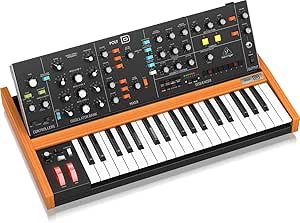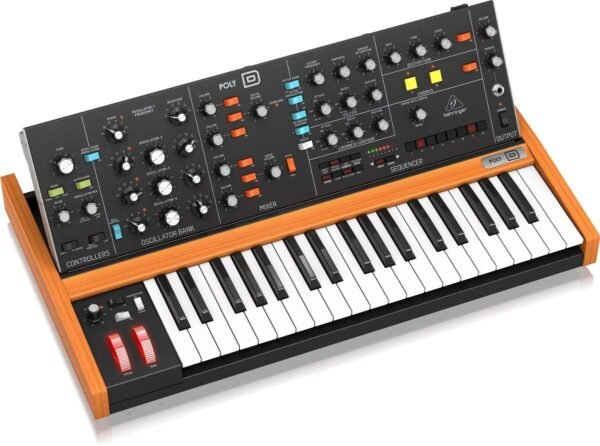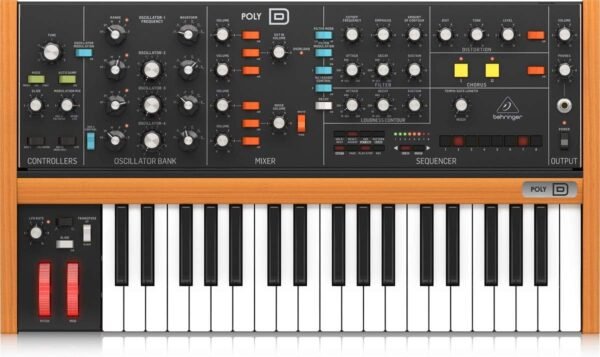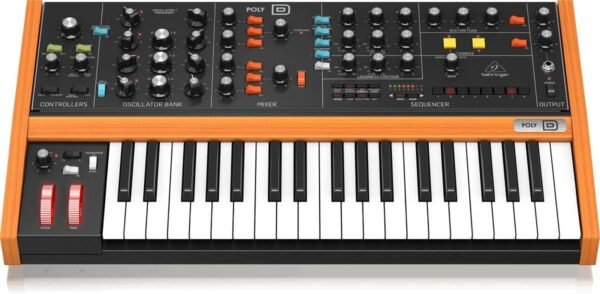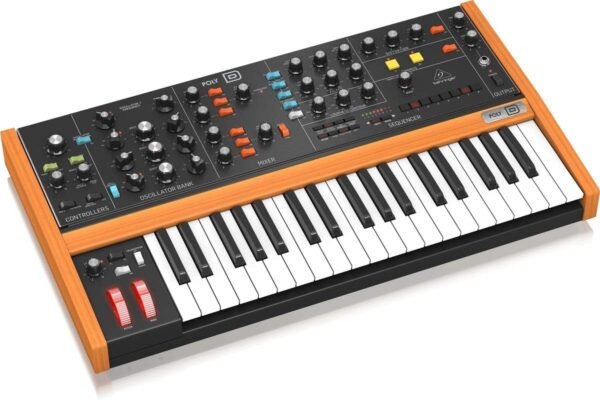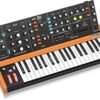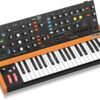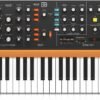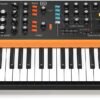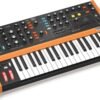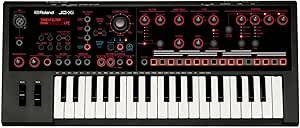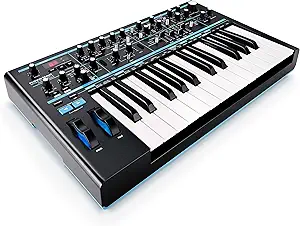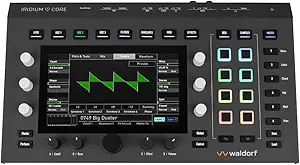Behringer Poly D Synthesizer review exploring features, sound quality, and performance insights
Behringer Poly D Synthesizer review exploring features, sound quality, and performance insights
- The build quality feels sturdy and reliable, combining metal and plastic materials for a premium touch.
- The sound output is incredibly rich and warm, delivering a classic analog tone that stands out in any mix.
- The 32-step sequencer provides creativity without limits, enabling intricate patterns and sequences with ease.
- Its compact size is perfect for home studios, while still offering full-size keys for a comfortable playing experience.
As an Amazon Associate I earn from qualifying purchases.
Description
A Hands-On Experience with the Behringer Poly D Polyphonic Analog Synthesizer
Testing the Behringer Poly D Polyphonic Analog Synthesizer felt like stepping into a retro-futuristic sound lab. As someone who’s spent countless hours fiddling with synths, I was genuinely impressed by this quadruple VCO design that delivers some seriously lush and textured tones. While it’s not perfect, it packs a lot of punch for anyone diving into analog synthesis or even seasoned musicians looking to expand their setup.
Design and Build Quality: Sturdy with a Retro Vibe
The first thing that struck me about this synth was its classic design and build quality. It feels solid with a combination of metal and plastic components that give it a robust yet elegant look. The painted finish adds a touch of vintage charm, and those full-size 37 keys are a joy to play. At around 26.1 pounds, it’s not exactly lightweight, but the heft adds to its premium feel. I did, however, find it a bit bulky—31.4 x 19.6 x 6.3 inches means it takes up a fair amount of desk space.
Sound Engine: Fat, Warm, and Versatile
The sound this synthesizer produces is insane. The quad VCO design allows for 4-voice paraphonic operation, giving you the ability to layer incredibly fat tones. The classic ladder filter is the real star here, delivering that warm, punchy low end that’s perfect for bass lines. I spent hours tweaking the filter and was blown away by how much control it gave me over the sound. The addition of the BBD stereo chorus really opens up the stereo field, making everything sound lush and wide.
But it’s not all sunshine. The synth is analog, so tuning can sometimes drift, especially during long sessions. It’s a minor inconvenience, but for purists, it’s part of the charm.
Features Galore: From Arpeggiators to Step Sequencers
One of the highlights of this synth is the 32-step sequencer. It’s intuitive to use, and I loved how it allowed me to quickly lay down patterns and experiment. The built-in arpeggiator is another standout feature—simple yet effective for creating rhythmic patterns.
What surprised me was how tactile the controls are. Knobs feel sturdy, and there’s a tactile satisfaction in flipping those switches. However, I did notice that the interface can be intimidating for beginners. The sheer number of knobs and sliders might feel overwhelming at first, but once you learn your way around, it’s incredibly rewarding.
Key Benefits
- Quadruple VCO design delivers incredibly fat and textured tones.
- The classic ladder filter is perfect for warm bass lines and punchy leads.
- 32-step sequencer and arpeggiator make pattern creation a breeze.
- BBD stereo chorus adds lush, wide effects to your sound.
- Tactile controls and full-size keys enhance the playing experience.
Areas of Concern
- Bulky design takes up significant desk space.
- Analog tuning can drift during extended use.
- The interface might be intimidating for beginners due to its complexity.
Competing Products: How Does It Stack Up?
When comparing this synth to others like the Korg Minilogue XD or the Moog Subsequent 37, there are some clear differences. The Korg Minilogue XD, for example, offers digital oscillators alongside analog ones, which gives it more versatility in terms of sound design. However, it lacks the sheer analog warmth and fatness of the Poly D. On the other hand, the Moog Subsequent 37 is a powerhouse with superior build quality and a more refined sound engine, but it comes at a significantly higher price.
What sets the Poly D apart is its ability to deliver authentic analog tones at a price point that’s accessible. While it doesn’t quite match the feature set of the Korg or the prestige of the Moog, it holds its own in terms of sound quality and playability.
Cost Efficiency
Discussing the value for money, this synthesizer is a fantastic option for musicians who want authentic analog sound without breaking the bank. While it may not have all the bells and whistles of higher-end models, the combination of quad VCOs, a ladder filter, and full-size keys makes it worth every penny. It’s an especially great choice for those who want to experiment with analog sound but aren’t ready to invest in more expensive alternatives. The price-to-quality ratio truly stands out here.
Final Thoughts
The Behringer Poly D Polyphonic Analog Synthesizer is a solid piece of gear for anyone passionate about analog sound. Whether you’re a seasoned musician or just starting out, it delivers a mix of classic design, warm tones, and modern features that’s hard to beat at its price point. While there are some areas for improvement, such as its size and tuning stability, the positives far outweigh the negatives. For me, it’s found a permanent spot in my setup. If you’re looking for rich analog tones without going broke, this might just be the synth for you.
Additional information
| Item Weight | 26.1 pounds |
|---|---|
| Body Material | Metal and Plastic |
| Connector Type | [MIXED] |
| Included Components | Analog 4-Voice Polyphonic Synt |
| Finish Type | Painted |
| Manufacturer | Music Tribe |
| Global Trade Identification Number | 04033653032049 |
| Product Dimensions | 31.4 x 19.6 x 6.3 inches |
| Item model number | POLY D |
| Is Discontinued By Manufacturer | No |
| Color Name | Black |
| Item Styling | Classic |
| Material Type | Metal Plastic |
| Number of Keyboard Keys | 37 |
| Size | 37-Key |
